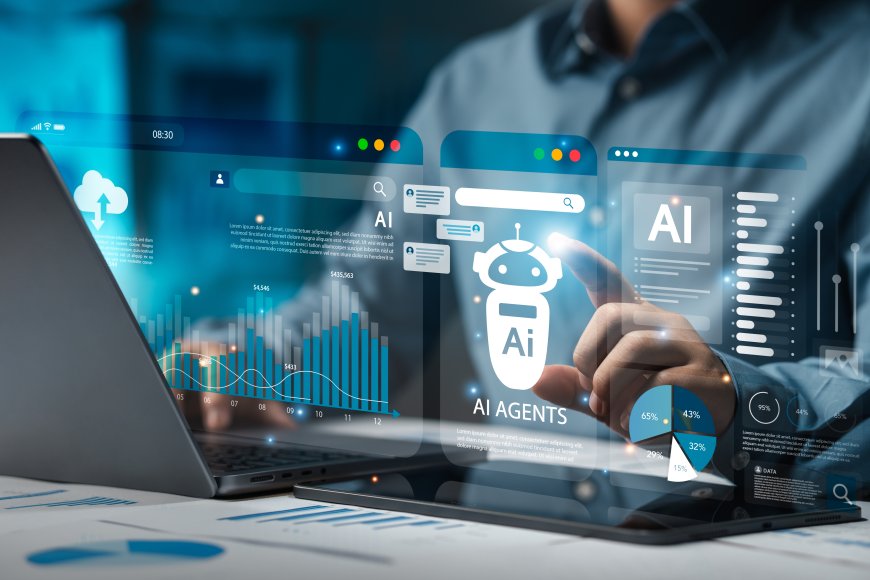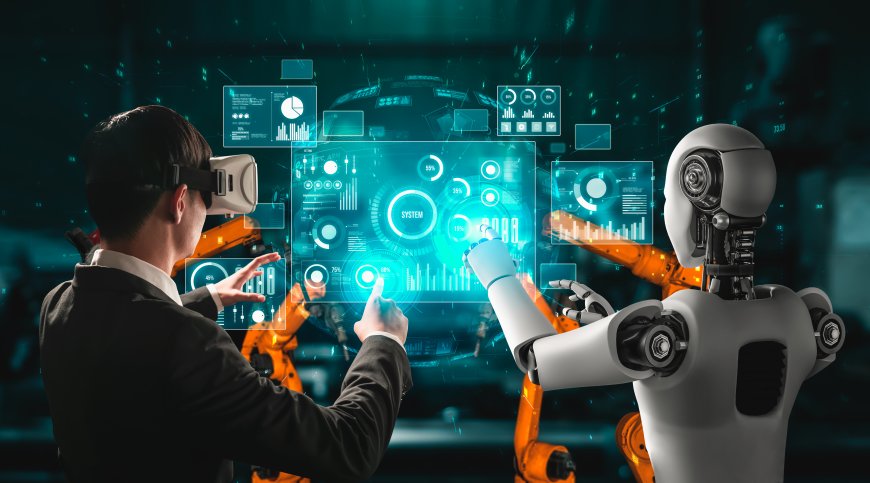Using AI in Leadership: Finding the Critical Balance Between Technology and Human Interaction
The future of high-impact leadership is mastering the AI-human balance. Learn how to strategically delegate tasks to AI while preserving essential human qualities like empathy and judgment.

The biggest difficulties are facing today's leaders. In addition to learning how to lead alongside it, they are quickly converting the digital world into artificial intelligence. However, while AI systems are becoming more and more effective tools, they are devoid of important human traits like judgment, empathy, and context.
The future of high-impact leadership: Striking the correct balance between technology and people is more crucial than having to pick one over the other. The new imperative is to treat AI as a supplement to human CEOs rather than as a replacement. Finding a balance between technology and leadership will be essential for high-impact leadership in the future.
The New Partnership: Empathy vs. Efficiency
Successful integration requires an understanding of each partner's distinct competencies within the leadership structure.While artificial intelligence handles the "what" and "how swiftly," human leaders must focus on the "why" and "how meaningfully."
The Function of AI: The Efficiency Engine AI is particularly good at applications requiring speed, scalability, and pattern recognition.
The following should be attributed to technology by leaders:

- Predictive analysis combined with data processing: More quickly than any human team, artificial intelligence can sort through petabytes of data to find patterns, predict results, and highlight hazards. Resource optimisation requires automating complex scheduling and supply chain management, as well as optimising personnel workflows using productivity data.
- Automated Feedback Loops: highlight the creation of efficient learning environments through the use of low-risk learning paths and target real-time performance statistics. This approach allows individuals to learn continuously and adjust their performance based on data without high-risk effects.
- The Role of the Leader: Defines the leader's primary function as the source of influence. This underscores that a leader's ability to inspire, guide, and shape the environment is more critical than their technical skills or position.
Designing the Human-AI Workflow
To integrate successfully, leaders must intentionally design workflows that preserve the human touch where it matters most.
The role of leadership |
Assigned to AI |
Allotted to Human Leaders |
Making Decisions |
evaluates potential outcomes, determines the best options, and computes risk. |
makes the final decision, controls the impact on stakeholders, and provides an explanation of the decision's reasoning
|
Team Leadership |
detects anomalies in performance, automates scheduling, and monitors analytics. |
offers sensitive remarks, resolves conflicts, and offers personalized career advice.
|
Innovation & Strategy |
finds contemporary opportunities, analyzes market trends, and models outcomes. |
establishes the overarching objective and vision, stimulates risk-taking, and fosters creativity.
|
Handling Cultural and Ethical Minefields
Adoption of AI is hampered by cultural rather than scientific factors. Effective leaders must be pioneers in two major areas:

Promoting Ethical AI Governance:
- AI is not objective: it reflects the biases present in training data. Leaders must take proactive measures to reduce the risk:
- Transparency: Be open about when and how AI influences decisions, particularly in sensitive areas like promotions and hiring.
- Responsibility: Ensure that each AI-informed decision has a clear human accountability chain. Accept and accept responsibility for the outcome, regardless of what the system suggests.
Developing "Tipping Point" Skills
One of the most common feelings is fear of losing your job. Leaders need to invest in fundamental human skills in order to move the emphasis from automation to augmentation:
-
Teaching staff members how to assess, challenge, and ultimately reject AI-generated concepts rather than just accept them is known as data literacy.
-
The capacity for teamwork, effective communication, and empathy is known as emotional intelligence, or EQ.
-
Creating a culture of lifelong learning in which reskilling is expected, as well as preparing employees for previously unimaginable tasks, are examples of adaptability.
Being a Leader with Intention
 Integrating AI into leadership is a human-centric design challenge rather than a technological undertaking. Successful leaders will be those who are most deliberate about preserving and enhancing the human attributes—empathy, judgment, and vision—that AI can never replace, rather than automating the majority of tasks. Leaders can create a strong human-AI partnership that promotes purpose and productivity in the workplace by exhibiting ethical adoption and placing a high priority on upskilling.
Integrating AI into leadership is a human-centric design challenge rather than a technological undertaking. Successful leaders will be those who are most deliberate about preserving and enhancing the human attributes—empathy, judgment, and vision—that AI can never replace, rather than automating the majority of tasks. Leaders can create a strong human-AI partnership that promotes purpose and productivity in the workplace by exhibiting ethical adoption and placing a high priority on upskilling.
What's Your Reaction?
 Like
0
Like
0
 Dislike
0
Dislike
0
 Love
0
Love
0
 Funny
0
Funny
0
 Angry
0
Angry
0
 Sad
0
Sad
0
 Wow
0
Wow
0
























































































































































































